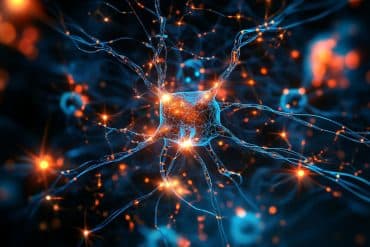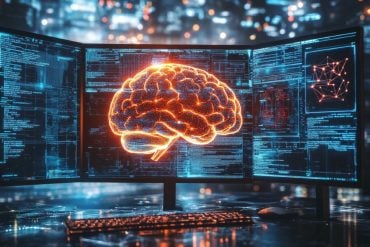Summary: Applying transcranial direct current stimulation to the dorsolateral prefrontal cortex can help to improve cognitive control and may be a beneficial treatment for those with autism, schizophrenia and ADHD, a new study reports.
Source: University of Queensland.
A cutting edge, non-invasive brain stimulation technique could improve cognitive control for people with conditions such as schizophrenia and autism.
Researchers at The University of Queensland’s Centre for Clinical Research have found the technique – which applies high-definition transcranial direct current stimulation to a particular area of the brain – improves cognitive and conflict control.
PhD candidate Oyetunde Gbadeyan said the study provides the basis to explore potential benefits for people with impaired cognitive control associated with schizophrenia, autism spectrum disorder or attention deficit hyperactivity disorder.
“Cognitive control is the collective term for the processes by which people take in relevant information, but tune out distracting or irrelevant information to achieve goal-directed behaviour,” Mr Gbadeyan said.
“The smaller electrodes allowed researchers to better pinpoint the target region, in this case the dorsolateral prefrontal cortex.
“The improvement was greater with active brain stimulation than with placebo stimulation and, for the first time, established a direct causal involvement of the dorsolateral prefrontal cortex in cognitive control in humans.
“This method could improve the way people with impaired cognitive control process conflicting information but more research is needed to better understand the mechanisms of how it works.”

The study included 120 healthy young adult participants.
Each participant received active and placebo stimulation on separate days while completing behavioural tasks on-screen.
“Active stimulation to the selected target region improved conflict adaptation,” Mr Gbadeyan said.
“These findings also lend support to the theory that the dorsolateral prefrontal cortex region of the brain is central to behavioural adjustment following conflict detection.”
Source: Kim Lyell – University of Queensland
Image Source: NeuroscienceNews.com image is adapted from the University of Queensland press release.
Original Research: Abstract for “Stimulation of Dorsolateral Prefrontal Cortex Enhances Adaptive Cognitive Control: A High-Definition Transcranial Direct Current Stimulation Study” by Oyetunde Gbadeyan, Katie McMahon, Marco Steinhauser and Marcus Meinzer in Journal of Neuroscience. Published online December 14 2016 doi:10.1523/JNEUROSCI.2450-16.2016
[cbtabs][cbtab title=”MLA”]University of Queensland “Non-Invasive Brain Stimulation Improves Cognitive Control.” NeuroscienceNews. NeuroscienceNews, 16 December 2016.
<https://neurosciencenews.com/tdcs-cognitive-control-5763/>.[/cbtab][cbtab title=”APA”]University of Queensland (2016, December 16). Non-Invasive Brain Stimulation Improves Cognitive Control. NeuroscienceNew. Retrieved December 16, 2016 from https://neurosciencenews.com/tdcs-cognitive-control-5763/[/cbtab][cbtab title=”Chicago”]University of Queensland “Non-Invasive Brain Stimulation Improves Cognitive Control.” https://neurosciencenews.com/tdcs-cognitive-control-5763/ (accessed December 16, 2016).[/cbtab][/cbtabs]
Abstract
Stimulation of Dorsolateral Prefrontal Cortex Enhances Adaptive Cognitive Control: A High-Definition Transcranial Direct Current Stimulation Study
Conflict adaptation is a hallmark effect of adaptive cognitive control and refers to the adjustment of control to the level of previously experienced conflict. Conflict monitoring theory assumes that the dorsolateral prefrontal cortex (DLPFC) is causally involved in this adjustment. However, to date, evidence in humans is predominantly correlational, and heterogeneous with respect to the lateralization of control in the DLPFC. We used high-definition transcranial direct current stimulation (HD-tDCS), which allows for more focal current delivery than conventional tDCS, to clarify the causal involvement of the DLPFC in conflict adaptation. Specifically, we investigated the regional specificity and lateralization of potential beneficial stimulation effects on conflict adaptation during a visual flanker task. One hundred twenty healthy participants were assigned to four HD-tDCS conditions: left or right DLPFC or left or right primary motor cortex (M1). Each group underwent both active and sham HD-tDCS in crossover, double-blind designs. We obtained a sizeable conflict adaptation effect (measured as the modulation of the flanker effect as a function of previous response conflict) in all groups and conditions. However, this effect was larger under active HD-tDCS than under sham stimulation in both DLPFC groups. In contrast, active stimulation had no effect on conflict adaptation in the M1 groups. In sum, the present results indicate that the DLPFC plays a causal role in adaptive cognitive control, but that the involvement of DLPFC in control is not restricted to the left or right hemisphere. Moreover, our study confirms the potential of HD-tDCS to modulate cognition in a regionally specific manner.
SIGNIFICANCE STATEMENT Conflict adaptation is a hallmark effect of adaptive cognitive control. While animal studies have suggested causal involvement of the DLPFC in this phenomenon, such evidence is currently lacking in humans. The present study used high-definition transcranial direct current stimulation (HD-tDCS) to demonstrate that the DLPFC is causally involved in conflict adaptation in humans. Our study confirms a central claim of conflict monitoring theory, which up to now has predominantly relied on correlational studies. Our results further indicate an equal involvement of the left and right DLPFC in adaptive control, whereas stimulation of a control region—the primary motor cortex—had no effect on adaptive control. The study thus confirms the potential of HD-tDCS to modulate cognition in a regionally specific manner.
“Stimulation of Dorsolateral Prefrontal Cortex Enhances Adaptive Cognitive Control: A High-Definition Transcranial Direct Current Stimulation Study” by Oyetunde Gbadeyan, Katie McMahon, Marco Steinhauser and Marcus Meinzer in Journal of Neuroscience. Published online December 14 2016 doi:10.1523/JNEUROSCI.2450-16.2016






